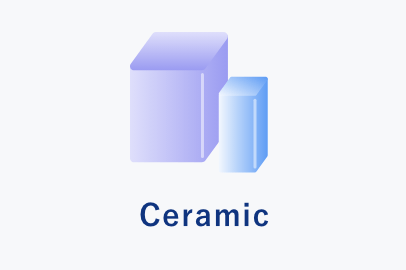Pigment
Complex Inorganic Color Pigment (CICP) is an inorganic pigment formed by calcination of two or more metal oxides and is sometimes referred to as a calcined pigment because of its calcination process at a high temperature of 800°C or higher. The greatest feature of composite oxide pigments is their high heat resistance, chemical resistance, weather resistance (light) resistance, and safety, which are brought about by their extremely stable structure. Originally developed as coloring agents for ceramics and enamel, they have long been widely used for coloring ceramics. The excellent colorfastness (heat resistance, weather (light) resistance, chemical resistance, etc.) of these pigments for ceramics matches the high demand for colorants for plastics and paints today, and they are now widely used in engineering plastics and heat-resistant paints, which have been in particularly high demand in recent years, and outdoor paints for building materials and other applications. In addition, they are now widely used in outdoor paints for building materials and many other applications. We also offer a lineup of products that comply with various legal regulations, which are becoming stricter year by year.
Complex Inorganic Color Pigment

With nearly 50 years of experience, TOMATEC offers complex inorganic color pigments in a broad-spectrum of colors such as blue, green, yellow, brown, and black. TOMATEC colors are used in many fields, including plastics, coatings, and ceramics, both domestically and internationally. In addition to colorants, TOMATEC also markets functional pigments that utilize optical properties. These include near-infrared range and visible light range, such as near-infrared reflective and laser marking pigments. We strive to provide customized service by focusing on dialogue with each customer. We achieve this by providing information on compliance with relevant laws, regulations and various technical data.
Actual colors in the color chart may differ slightly.


Complex Inorganic Color Pigments are a kind of inorganic pigments with a stable structure and extremely low toxicity.
Some of the compositions contain chromium, antimony, nickel, or cobalt, which are said to be environmentally hazardous substances and can be safety concerns. There is a growing demand for pigments that do not contain these elements. TOMATEC has developed many pigments that do not contain chromium, antimony, and nickel, which are essential elements for composite oxide pigments, and that have a hue similar to that of conventional pigments while maintaining expected performance.
Functional complex metal oxides

Pigments utilize absorption and reflection properties in the visible light range as coloring agents. In recent years, near-infrared reflective properties of some Complex Inorganic Color Pigments have been attracting strong attention. Near-infrared reflective black pigments, which take advantage of the reflective properties in the near-infrared region, are used as colorants for heat shield coatings. Since near-infrared reflective black pigments reduce the temperature increase of objects due to near-infrared rays, such as sunlight, they can be used in coatings and plastics to prevent heat absorbtion, improve cooling efficiency, prevent thermal deformation and thermal expansion, and improve product life. We also offer a full lineup of chrome-free near-infrared reflective pigments and other products to meet the various needs of our customers.

















